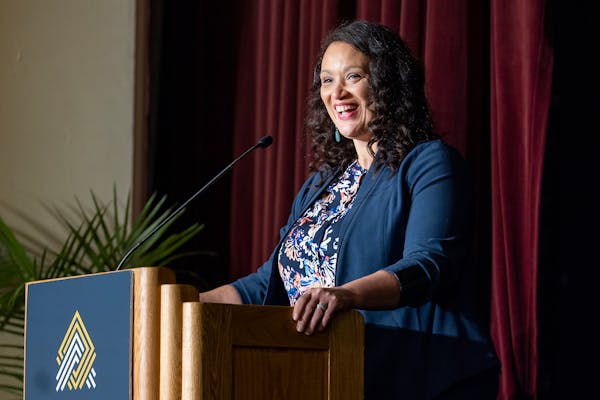An inaugural racial equity analysis of 22 Minnesota cities and counties showed some progress in diversifying workplaces, leadership and community investments, but also shows much more work is needed.
For example, 90% of the government entities had appointed team members to work on diversity, equity and inclusion efforts. But only 71% budgeted funds to accompany the work and just 59% had elevated the responsibility of diversity and equity goals to the leadership ranks of their city.
The Center for Economic Inclusion's new Racial Equity Dividends Index for the Public Sector marked the first time the center offered its surveys and analytical data to city and county partners so they could accurately assess racial equity policies and practices and outcomes at the city level.
"Minnesota cities and counties are changing," said Tawanna Black, founder and chief executive of the Center for Economic Inclusion (CEI). "We know that inclusive economic growth is important to cities and counties across the state — we also know that they are the key to breaking down systems that have historically and intentionally kept wealth from Black and brown people."
CEI evaluated the 22 participating cities on 11 key areas including leadership, workforce development, economic development and public safety.
The index found mixed results.
Seventeen of the jurisdictions scored above 67 on at least one of 11 racial equity measures. But none of the cities scored well on culture, retention and advancement; supplier diversity; or human services. Cities showed problems with affordable housing and higher mortgage denial rates for Black and brown people, Black told city leaders.
Kevin McKinnon, deputy commissioner of the Minnesota Department of Employment and Economic Development, told the government leaders he hoped they would use "this important report" to help move the needle from awareness to action and accountability so that more Black and brown Minnesotans can more fairly participate in the state's economic successes.
"Everyone of us in government know the importance of measurement and accountability," McKinnon said, while encouraging city leaders to use the CEI data to find and change imbedded policies that may prove harmful.
The report report found 25% of government staffers and 35% of new hires were people of color; 90% of employees of color were paid enough to support their families; and eight of the 22 local governments took steps to eliminate barriers that hurt suppliers of color.
"Leadership matters," Jeff Aguy, founder and CEO of the 2043 SBC economic development firm, told the crowd assembled Wednesday.
The CEI index is just one of many efforts that surfaced to eliminate racial disparities in hiring, pay, promotions and suppliers following the 2020 murder of George Floyd and subsequent civil unrest.
Last year, CEI launched its corporate racial equity dividends index after partnering with and evaluating 44 corporations including 3M, Target, Best Buy and U.S. Bank. Now the attention turning to the public sector to see if surveys, data and case studies from peer jurisdictions will help city leaders identify and tear down inequities in pay, housing, policies around land use and more.
The 22 participating cities and counties — which employ 27,000 and provide services to 1.9 million Minnesotans — voluntarily submitted surveys and data for CEI to score. Scores averaged 29 out of 100, suggesting more work was needed to erase "gaping" economic racial disparities, Black and state leaders said Wednesday.
Bloomington, Minnetonka, the Metropolitan Council and Olmsted County scored high on several measures of the CEI's first public sector Racial Equity Dividends Index.
Results, released early Wednesday before mayors, state and city officials at Hamline University, also showed Minnetonka's racial equity standards scored well on workforce development practices and on policies dealing with housing, transportation and land use.
Ramsey County also scored well on housing, transportation and land-use policies.
"Local governments' investments in racial equity strategies are evident and the impacts are being felt across the state," Black said. But she acknowledged there were "many opportunities for progress."
For example, local governments generally employed Black, Indigenous, Hispanic and Asian individuals at every level of their organization, but representation in senior leadership posts failed to match the racial diversity of the community or state, the report said, noting that larger cities tended to have more racially diverse staffs.
The index also found that just 41% of participating municipalities had clear standards for how employees could get promoted. Most cities didn't measure employee pay by race, or survey their workers about the adequacy of their job training or leadership development needs, the report found.
The index noted that less than 1% of the local governments hired businesses owned by Latino, Black, Indigenous and Asian-American suppliers. At the same time, other types of support was issued to small businesses owned by people of color, the report found.
The report revealed other contradictions. Researchers found 68% of local governments identified racial equity as "a public policy priority," yet only 5% used a racial equity analytical tool to measure how they were doing.
New York City turns to AI-powered scanners in push to keep guns out of the subway system
North Carolina regulators says nonprofit run by lieutenant governor's wife owes the state $132K


